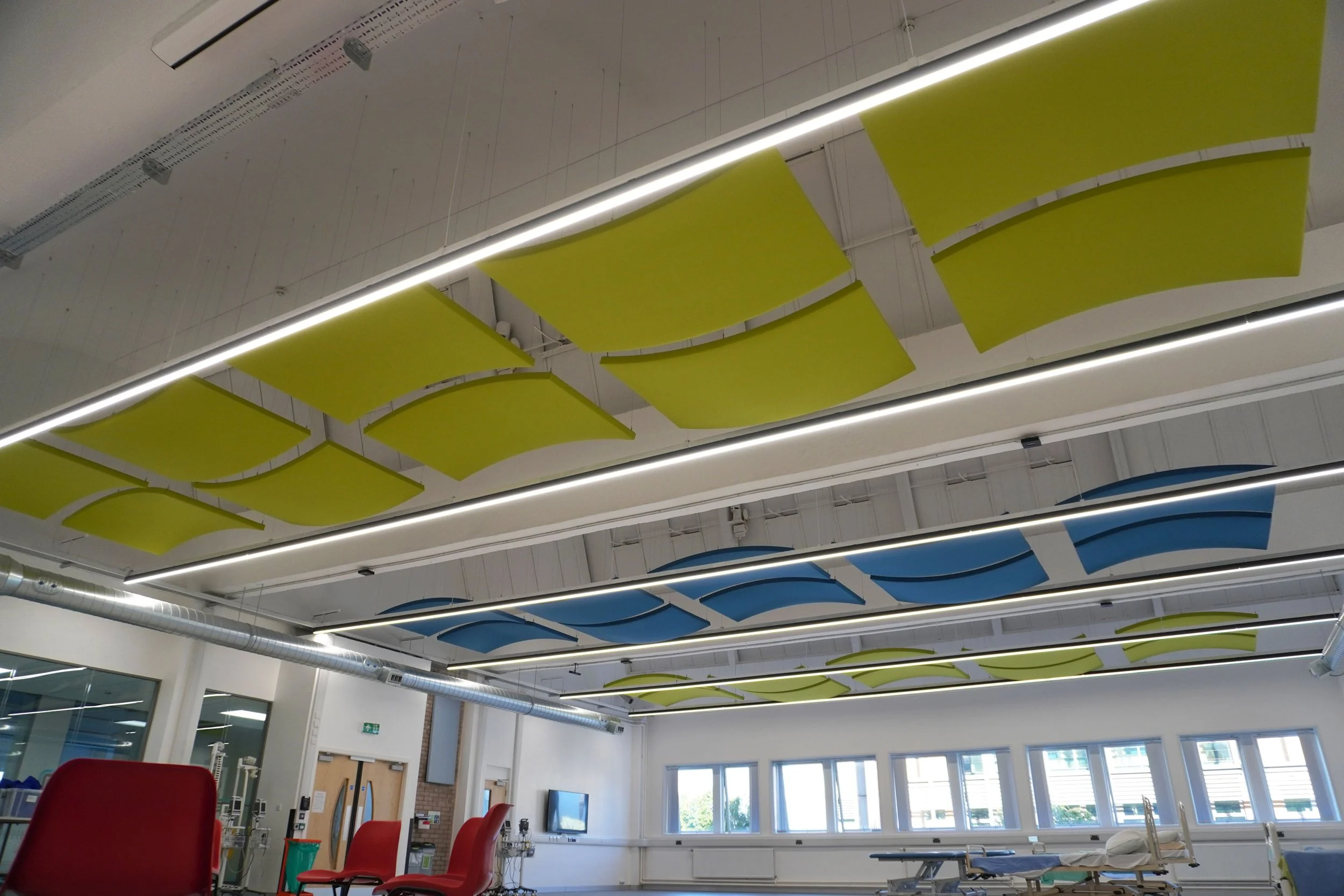Installation of Innovative Wave-Shaped Acoustic Ceiling Panels at the University of Bradford
Background
The University of Bradford, renowned for its commitment to sustainability and innovation, sought to enhance the acoustic environment of two key spaces. The primary objectives were to improve sound quality, reduce noise levels, and create a visually appealing space conducive to learning and engagement.
Objectives
Improve Acoustic Quality: Enhance sound clarity and reduce reverberation times in large spaces to ensure that lectures and presentations are easily audible to all attendees.
Aesthetic Appeal: Integrate an aesthetically pleasing design that complements the modern architectural style of the university buildings.
Sustainability: Utilise eco-friendly materials and processes in line with the university's sustainability goals.
Solution
After a thorough evaluation of various acoustic solutions, the university selected wave-shaped acoustic ceiling panels. These panels were chosen for their innovative design and class-leading acoustic properties.
Implementation
Design and Planning:
Site Assessment: We worked with the university and conducted a detailed acoustic analysis of the lecture halls to determine the specific requirements for sound absorption and diffusion.
Custom Design: Wave-shaped panels were custom-designed to fit the unique dimensions and architectural features of each space.
Material Selection:
Eco-Friendly Materials: The panels were made from rPET, a recycled polyester substrate, providing excellent acoustic performance while aligning with the university's sustainability objectives.
Fire Safety Compliance: All materials used were certified to meet stringent fire safety standards, ensuring a safe environment for students and staff.
Installation Process:
Preparation: Existing ceiling structures were inspected and reinforced where necessary to support the new panels.
Installation: The panels were installed using laser lines, allowing for precise placement and alignment. This layout easy removal and replacement of individual panels if needed.
Integration with Existing Systems: Careful planning ensured that the new panels did not interfere with existing lighting, ventilation, and multimedia systems.
Outcomes
Enhanced Learning Environment:
Improved sound clarity and reduced background noise levels have created a more conducive learning environment. Students reported better concentration and engagement during lectures.
Aesthetic Improvement:
The wave-shaped design added a modern, dynamic element to the spaces, receiving praise for its visual appeal and integration with the university's architectural style.
Sustainability Achievements:
The use of recycled materials and the efficient installation process underscored the university's commitment to sustainability.
Conclusion
The installation of innovative wave-shaped acoustic ceiling panels at the University of Bradford successfully addressed the key objectives of improving acoustic quality, enhancing aesthetic appeal, and adhering to sustainability principles. This project serves as a model for other educational institutions seeking to enhance their learning environments through innovative acoustic solutions.



